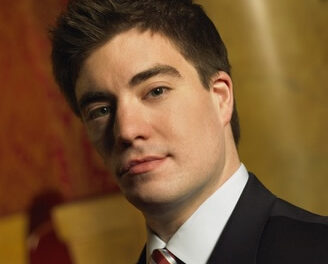Sometimes one little word can make all the difference. The publicity told us that “members of the Carolina Wind Quintet” would be performing as part of the UNC William S. Newman Series, and your critic blithely assumed that meant “all,” where as it actually meant “some” members. I am particularly fond of the wind quintet literature, situated ideally between the sometimes sterilizing seriousness of the string quartet literature (call a work a “string quartet”, and you set up expectations of a discourse well above the symphonic in density and difficulty), and the pompously martial inclinations of the brass quintet. The platonic wind quintet is a piece in a major key and a good mood, with plenty of joking, a piece which adjourns at the conclusion for a cold one or two at the local watering hole.
Instead, the program offered by the flute-less winds of the Carolina Wind Quintet (Michael Schulz, oboe, Donald L. Oehler, clarinet, Andrew McAfee, horn, and John Pederson, bassoon), accompanied expertly by Wonmin Kim, piano, was almost paralyzing in its tone. We had an hour-long program made up of three works, opening with the Trio Pathetique (1832) for clarinet, bassoon and piano by Russian Mikhail Glinka (1804-1857). Glinka is known for his two major stage works, A Life for the Tsar and Ruslan and Ludmila, but he also produced a very considerable volume of piano music, mostly social dances, and not quite on the level of concert music, rather than social diversion. The Trio is in a Schubertian vein, with style that favors the lyrical more than the virtuosic. It was expertly played, but there was nothing to be done about the essential sameness of the pathetic affect, and the poor bassoon was often overbalanced in the mix.
The problem of the combination of three unlike instruments came further to the fore in the Carl Reinecke Trio, Op. 274 for clarinet, horn, and piano, when McAfee attempted to open the lid of the piano to vociferous and unanimous “No!” from the audience, which knew the proclivities of that instrument in combination with the space at Hill Hall. McAfee thus tended always to overbalance the piano, with a sound which would be appropriate for a full symphony orchestra, but not for a trio in a small hall. One wonders what the sound would have been in 1905 at the premiere. Certainly the horn would have been less powerful. Reinecke is not an unskilled writer, and the Andante (subtitled here “A Tale”, a poor translation for “Ein Märchen” – better would have been “A Fairy Tale”) was in an attractively Brahmsian mode, with a beautifully understated close. But really, a half-hour of full-on Romanticism is too much for even a genius to wring out of this combination.
The final work, the Trio for piano, oboe and bassoon, by the emphatically non-Germanic Poulenc – gay, French, Parisian – brought a ray of light and wit to the proceedings. It dates from 1926, but might have been a century later in comparison to the Reinecke work which preceded it, full of brilliance, and with harmony looking forward to jazz, and not back to Wagner. Moments even sounded like bossa nova. One could hear why Paris was the place to be in the 1920s for the young American composer.











